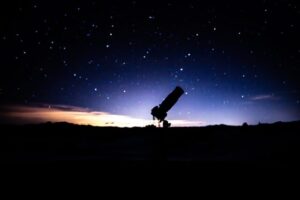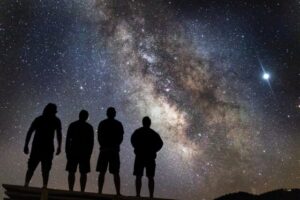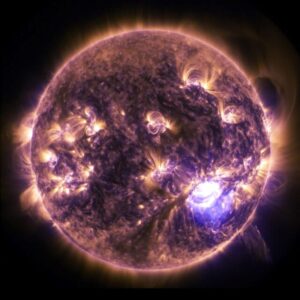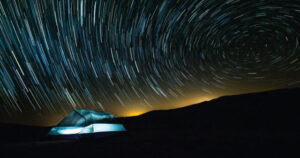Artist's impression of dark matter clumps around a Milky Way-like galaxy. These clumps are invisible and can only be detected through their gravitational effect on visible matter. The clumps, also known as subhaloes, come in a range of...
Peering through the thick dust clouds of the galactic bulge an international team of astronomers has revealed the unusual mix of stars in the stellar cluster known as Terzan 5. The new results indicate that Terzan 5 is in...
Credit: University of Notre Dame
Using colors to identify the approximate ages of more than 130,000 stars in the Milky Way’s halo, University of Notre Dame astronomers have produced the clearest picture yet of how the galaxy formed more than...
The interior structure of Uranus is illustrated.Credit: MIPT Press office
Using computer modeling, chemists from MIPT and Skoltech (the Skolkovo Institute of Science and Technology) have found out which molecules may be present in the interiors of Uranus, Neptune, and...
Cool brown dwarfs are a hot topic in astronomy right now. Smaller than stars and bigger than giant planets, they hold promise for helping us understand both stellar evolution and planet formation. New work from a team including Carnegie’s...
Rosetta's lander Philae has been identified in OSIRIS narrow-angle camera images taken on 2 September 2016 from a distance of 2.7 km. The image scale is about 5 cm/pixel. Philae's 1 m-wide body and two of its three legs...
This simulation shows how two galaxies merge over a period of 15 million years. The red and the blue dots illustrate the two black holes.Credit: Astrophysical Journal
If two galaxies collide, the merging of their central black holes triggers gravitational...
The ratio of volatile elements in Earth's mantle suggests that virtually all of the planet's life-giving carbon came from a collision with an embryonic planet approximately 100 million years after Earth formed. Credit: A. Passwaters/Rice University based on original...
You can tell Earth and the moon’s shadows apart by their edges: Earth’s is fuzzy, while the moon’s is sharp and distinct. This is because Earth’s atmosphere absorbs some of the sun’s light, creating an ill-defined edge. On the...
Storm systems and weather activity unlike anything encountered in the solar system are on view in these color images of Jupiter's north polar region from NASA's Juno spacecraft. Two versions of the image have been contrast-enhanced differently to bring...
Cosmic reionisation. Credit: ESA – C. Carreau
ESA's Planck satellite has revealed that the first stars in the Universe started forming later than previous observations of the Cosmic Microwave Background indicated. This new analysis also shows that these stars were...
























